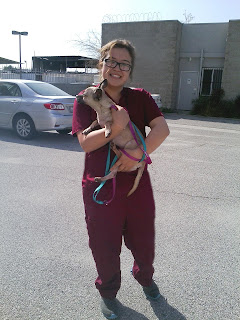(1) Positive Statement
I am definitely proud that I was able to pull off making the room look like the inside of a dog. Senior project wise, I'm really glad that i found so much research and learned a lot about Insulinoma and how to treat it because I think I definitely played a role in prolonging my dog's health and happiness. Gaining mentorship at Southern California Animal Hospital was also a great experience because I learned so much about the day to day tasks that go into working at a veterinary clinic.
a. What assessment would you give yourself on your 2-Hour Presentation (self-assessment)?
P+, maybe AE?
b. What assessment would you give yourself on your overall senior project (self-assessment)?
P+? Hopefully...
(3) What worked for you in your senior project?
Definitely my mentorship because I learned so much. Another thing that worked was research checks. It gave me the time to sit down and just focus on finding new information about Insulinoma.
(4) If you had a time machine, what would have you done differently to improve your senior project if you could go back in time?
Keeping up with the due dates. I kind of screwed myself over by turning in the i-Search revisions late because caused me to get a lower grade.
(5) Finding Value
Senior project has given me invaluable experience working at a veterinary clinic. I now know how to give and make vaccines, take out sutures, clean and take care of animals in isolation, give medications, suture, and so much more.










